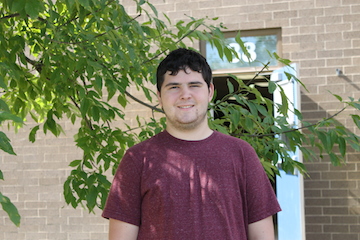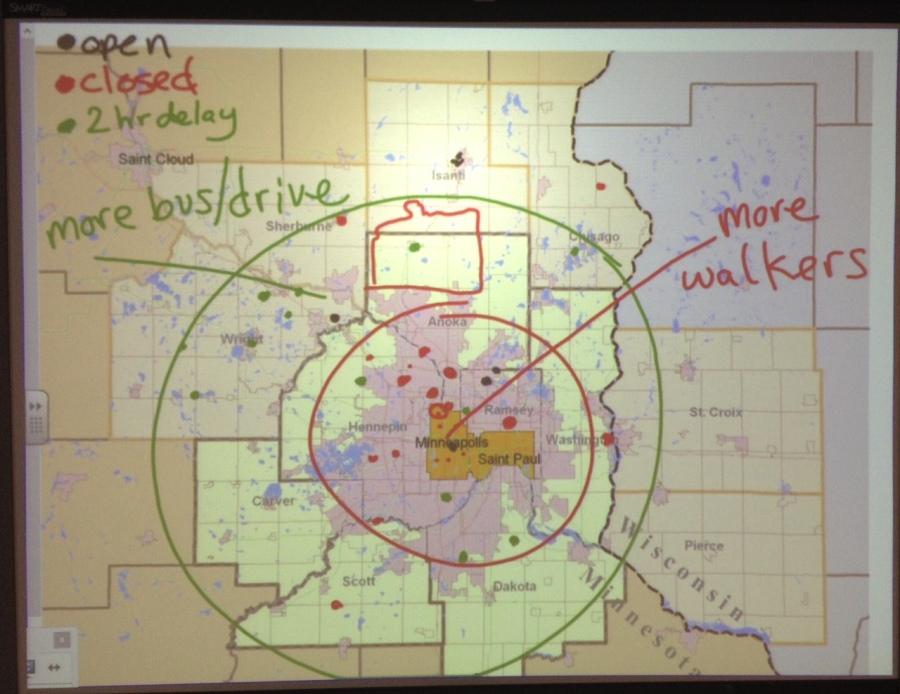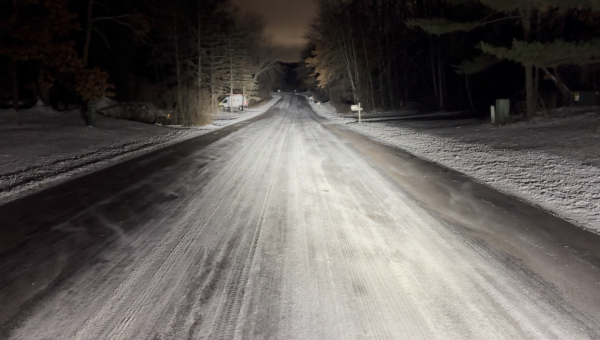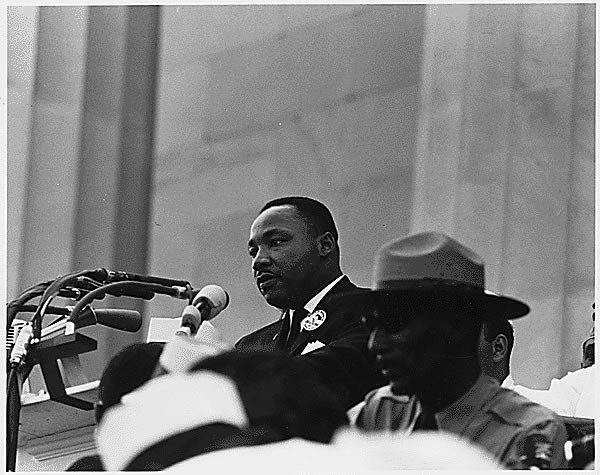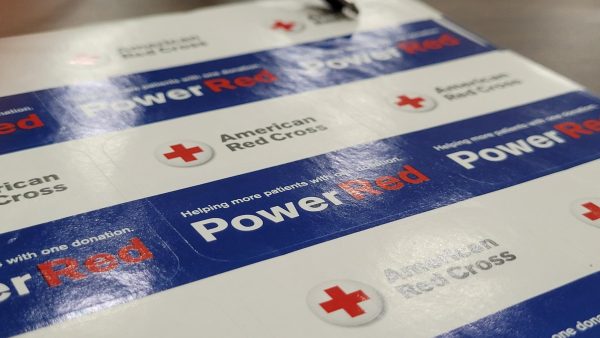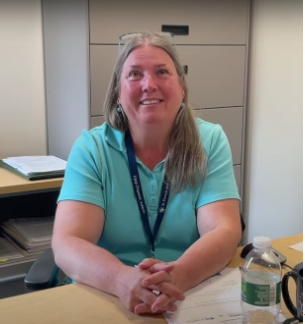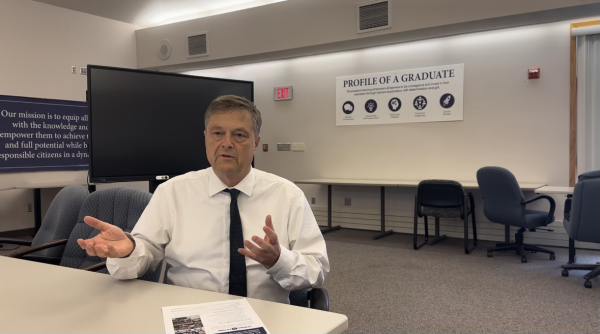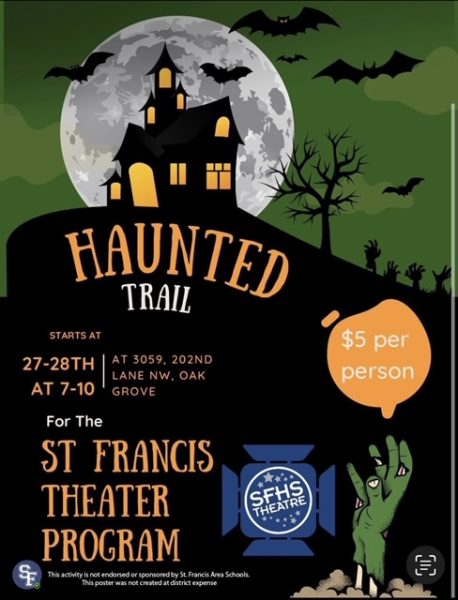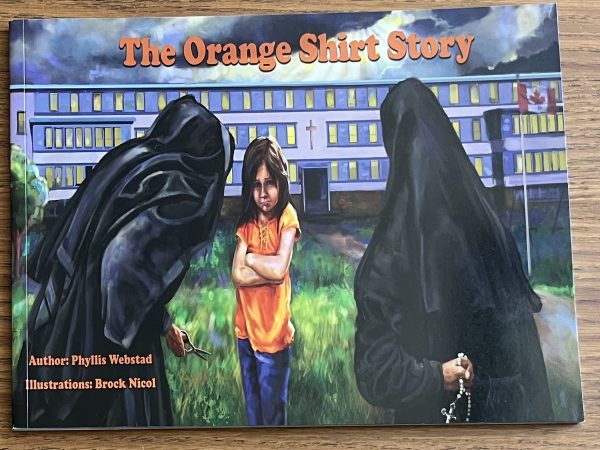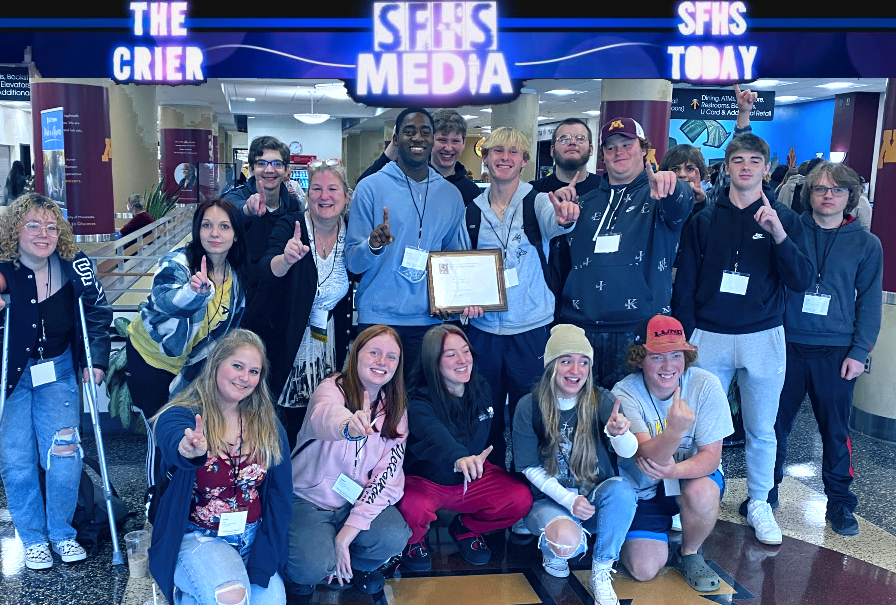Cold wave sweeps nation
Severe weather raises health concerns and school closings
Submitted photo by Teresa Orpen
Teresa Orpen’s class map of the metro area, showing what schools cancel, delay and stay open.
St. Francis has a tradition of being one of the last schools to close for weather issues. Talk to any student in the past and they could probably count on one hand the number of times schools closed over their entire 12 years of education.
This year, school has closed four times in January alone because of dangerously cold temperatures. January 6 and 7 had temperatures as low as -23 and winds as fast as 22 miles per hour, according to the National Weather Service. At times it could have felt like less than -40 degrees outside with the wind chill. Independant school district 15 also closed for the 27 and 28 for the dangerous weather.
Schools across the state debated canceling due to the weather, but on January 3 Governor Mark Dayton canceled public schools statewide for the first time since 1997.
“The safety of Minnesota’s school children must be our first priority,” said Dayton “I have made this decision to protect all our children from the dangerously cold temperatures now forecasted for next Monday. I encourage Minnesotans of all ages to exercise caution in these extreme weather conditions.”
When exposed to cold temperatures, the body desperately tries to keep its core temperature above 95 degrees (the temperature where hypothermia sets in according to the Mayo Clinic). Hypothermia, if left untreated will eventually lead to organ failure and death.
Frostbite was another concern and reason for Governor Dayton canceling schools. In our -40 degree temperatures, a person can get frostbite in less than 10 minutes and almost certainly would get frostnip, the first stage of frostbite, on any exposed fingers, nose, ears or cheeks.
“The safety of our students always comes first,” said Assistant Principal Donnie Thompson.
Mrs. Orpen’s algebra and geometry classes made a map showing what schools canceled, had a two hour delay and stayed open. Her classes analyzed the data and found that schools in urban areas, that had more students that walk to school, were faster to close due to the higher risk of frostbite.


